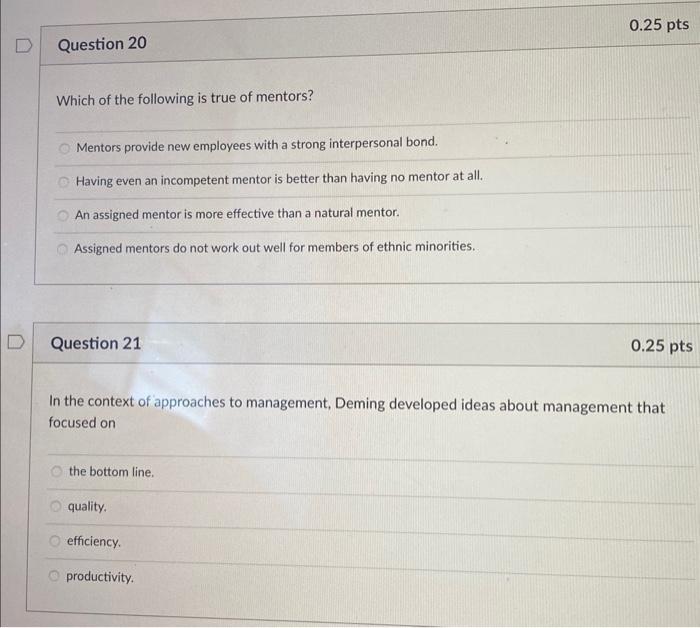10 things successful leaders never say: This insightful exploration dives deep into the communication styles that set apart effective leaders from those who struggle. We’ll uncover the subtle yet powerful phrases that undermine trust and productivity, and reveal the alternative approaches that cultivate high-performing teams.
Leadership styles vary, from transformational to transactional and servant leadership. Effective communication is key, shaping team dynamics and overall success. This article identifies 10 specific statements that successful leaders consciously avoid, highlighting their detrimental impact on morale and performance.
Introduction to Leadership Styles

Leadership, in its essence, transcends a single definition. It encompasses a spectrum of approaches, each tailored to specific contexts and personalities. Effective leaders understand that there’s no one-size-fits-all solution. Instead, they adapt their style to motivate and guide their teams, recognizing the diverse needs and motivations within their groups. From the inspiring vision of a transformational leader to the structured guidance of a transactional leader, and the supportive approach of a servant leader, leadership styles vary significantly.Successful leaders often exhibit a blend of traits and characteristics regardless of their specific style.
Common traits include strong communication skills, decisive decision-making, integrity, and empathy. These qualities foster trust, respect, and collaboration within teams, leading to increased productivity and innovation. The ability to effectively communicate is paramount in leadership. Clear and concise communication fosters understanding, reduces ambiguity, and enables teams to work collaboratively towards shared goals. Miscommunication can lead to misunderstandings, decreased productivity, and even conflict.
Defining Leadership Styles
Leadership encompasses various styles, each with unique characteristics. Transformational leadership inspires followers to achieve extraordinary outcomes by focusing on their shared vision and values. Transactional leadership focuses on clear expectations, rewards, and penalties to drive performance. Servant leadership prioritizes the needs of followers and empowers them to achieve their full potential.
Common Traits of Successful Leaders
Successful leaders, irrespective of their specific style, share certain common traits. These include strong communication skills, empathy, integrity, and decisiveness. These characteristics foster trust, respect, and collaboration within teams, leading to improved team performance and overall organizational success. For instance, strong communication allows leaders to articulate a clear vision and inspire others to contribute to the shared goals.
The Importance of Effective Communication in Leadership
Effective communication is the cornerstone of successful leadership. It bridges the gap between leaders and their teams, fostering a collaborative environment and enabling efficient work processes. Leaders who excel in communication are adept at conveying their vision, motivating their teams, and addressing concerns. This, in turn, promotes understanding and creates a supportive atmosphere where teams can flourish. Open and honest communication is essential to resolve conflicts and maintain positive relationships.
Comparison of Leadership Styles
| Leadership Style | Communication Approach | Typical Behaviors | Examples |
|---|---|---|---|
| Transformational | Inspirational, vision-oriented, and emotionally engaging. Leaders articulate a compelling vision and encourage participation from team members. | Charismatic, motivating, fostering a sense of purpose, and promoting innovation. | Martin Luther King Jr., Steve Jobs |
| Transactional | Clear, structured, and focused on performance. Leaders set expectations, provide rewards for meeting them, and address performance issues directly. | Organized, structured, and results-oriented. Emphasis on clear expectations and accountability. | Military leaders, project managers |
| Servant | Empathetic, supportive, and focused on empowering team members. Leaders prioritize the needs of their team and provide support for their development. | Supportive, empowering, and focused on team member growth. | Nelson Mandela, Mahatma Gandhi |
| Situational | Adaptable, flexible, and responsive to the specific context. Leaders adjust their approach based on the situation, team members’ needs, and the task at hand. | Flexible, adaptable, and responsive to changing circumstances. | Effective coaches, mentors |
Identifying Unsuccessful Communication Patterns
Effective communication is the bedrock of any successful team. Leaders who understand and actively avoid detrimental communication patterns foster a positive work environment, boost morale, and significantly increase productivity. Conversely, poor communication can lead to decreased trust, resentment, and ultimately, hinder progress. This section will delve into common communication pitfalls and how to navigate them effectively.Communication styles, whether direct or indirect, assertive or passive, can significantly impact team dynamics.
Understanding how different styles can either foster collaboration or create conflict is crucial for any leader aiming to build a high-performing team.
Negative Impact of Certain Phrases
Certain phrases and statements, though seemingly innocuous, can have a profoundly negative impact on team morale and productivity. These phrases can erode trust, foster a hostile work environment, and create a climate of fear rather than collaboration.
- Phrases that diminish individual contributions, such as “That’s not the way we do things around here,” or “You’re just not cut out for this,” often undermine the team member’s self-worth and motivation. This can lead to decreased engagement and a general sense of inadequacy within the team.
- Statements that shift blame or deflect responsibility, like “It’s not my fault,” or “That’s not my area of responsibility,” can damage trust and create a culture of avoidance. This can result in a lack of accountability and hinder problem-solving.
- Constant criticism without constructive feedback, for example, “This is terrible,” or “You’re always late,” breeds negativity and discourages improvement. This type of communication fosters a culture of fear and demotivates employees, leading to decreased productivity and potential turnover.
Examples of Undermining Phrases
Examples of common phrases or statements that undermine trust and create a hostile work environment are crucial for leaders to recognize and avoid. These examples highlight the impact of seemingly minor statements on overall team dynamics.
Ever wondered what successful leaders don’t say? It’s fascinating how certain phrases can derail a project. Knowing these subtle communication cues can be crucial, just like mastering Google search shortcuts can make your online searches a breeze. For instance, instead of vague statements, they use specific, actionable language. Learning 12 google search shortcuts that make searching even more handy here can help you become more efficient and effective.
Ultimately, these leadership principles, like these helpful search tools, boost productivity and improve outcomes, showing that even small changes can make a big difference.
- “That’s not a good idea.” This phrase, devoid of explanation or alternative suggestions, can make team members feel unheard and their contributions unimportant.
- “We’ve always done it this way.” This statement can stifle innovation and prevent the team from adapting to changing circumstances or new ideas.
- “You’re not creative enough for this role.” Such a comment directly attacks a team member’s capabilities, creating a hostile atmosphere and hindering their potential.
Comparing Communication Styles
Different communication styles can yield vastly different outcomes in leadership. A direct, assertive style can be effective in crisis situations but can alienate some team members if not carefully managed. Conversely, a passive communication style may foster harmony but can also fail to address critical issues promptly. Effective leaders need to adapt their style to the situation and the individuals involved.
Communication Pitfalls Table
This table summarizes common communication pitfalls, their consequences, and strategies for avoidance. Recognizing these pitfalls and adopting alternative approaches is crucial for building a strong and productive team.
| Communication Pitfall | Consequences | How to Avoid |
|---|---|---|
| Micromanagement | Demotivation, decreased autonomy, stifled creativity | Delegate tasks, trust team members, provide clear expectations and support |
| Lack of active listening | Misunderstandings, resentment, missed opportunities | Encourage questions, paraphrase what you hear, show empathy |
| Using jargon | Exclusion, confusion, feeling of disconnect | Use clear, concise language, avoid technical terms unless necessary, define unfamiliar terms |
| Overgeneralization | Lack of specific feedback, inaccurate perceptions | Focus on specific examples, provide concrete suggestions for improvement |
Analyzing Specific Statements Leaders Avoid
Effective leadership hinges on clear communication and a thoughtful approach to interactions. Successful leaders understand that certain statements, while seemingly innocuous, can erode team morale, diminish trust, and hinder productivity. This section delves into specific statements that undermine leadership effectiveness and provides alternative approaches that foster a positive and productive work environment.
Identifying Counterproductive Statements
Successful leaders carefully curate their language, avoiding statements that can create negativity or division within the team. These statements often stem from a lack of awareness about their potential impact or a failure to consider alternative ways of expressing the same idea. By understanding these pitfalls, leaders can proactively cultivate a more positive and productive atmosphere.
| Problematic Statement | Negative Impact | Alternative Approach | Reason for the Difference |
|---|---|---|---|
| “That’s not my job.” | Creates a sense of disengagement and lack of responsibility. Can foster a “blame game” mentality and hinder collaboration. | “Let’s brainstorm how we can approach this together. What resources do we have available?” | This approach shifts the focus to teamwork and shared responsibility, promoting a collaborative environment rather than an individualistic one. |
| “We’ve always done it this way.” | Prevents innovation and adaptation to changing circumstances. Can lead to stagnation and a failure to capitalize on new opportunities. | “Let’s evaluate our current processes and identify areas where we can improve efficiency and effectiveness.” | This approach encourages a proactive assessment of existing methods, fostering an environment that embraces change and progress. |
| “It’s not possible.” | Derails team motivation and creates a sense of helplessness. Discourages creative problem-solving and exploration of alternatives. | “Let’s explore the challenges and brainstorm different approaches to overcome them.” | This approach encourages a positive outlook and focuses on finding solutions rather than accepting limitations. |
| “That’s not my responsibility.” | Creates silos and undermines team cohesion. Leads to a lack of ownership and accountability. | “How can we collectively approach this task to ensure everyone’s responsibilities are clear?” | This approach emphasizes shared responsibility and clarifies individual roles within the team. |
| “You’re not meeting expectations.” | Creates a sense of inadequacy and demotivation. Can damage the trust and rapport between the leader and the team member. | “Let’s discuss what we can do to achieve the desired outcome together.” | This approach fosters a collaborative approach to performance improvement, rather than a judgmental one. |
| “I’m too busy.” | Creates a sense of detachment and lack of prioritization. Undermines the leader’s commitment to team success. | “Let’s schedule a meeting to discuss the most critical priorities and how we can best allocate resources.” | This approach demonstrates a proactive engagement in the team’s work and establishes clear priorities. |
| “That’s not my problem.” | Shows lack of empathy and concern for team members’ struggles. Creates a hostile environment. | “How can we help each other overcome this challenge?” | This approach prioritizes support and collaboration, fostering a sense of unity and collective problem-solving. |
| “It’s not fair.” | Leads to feelings of resentment and negativity. Can create an environment of dissatisfaction and distrust. | “Let’s analyze the situation objectively and find a solution that benefits everyone fairly.” | This approach fosters an objective analysis and seeks solutions that consider everyone’s needs. |
| “Just do it.” | Lack of clarity and direction. Can lead to confusion and ineffective work. | “Here’s what we need to achieve. Let’s Artikel the steps and discuss how we can best execute them.” | This approach provides clear expectations and guidance, promoting efficient task completion. |
| “That’s not a priority.” | Can lead to feelings of insignificance and demotivation. Undermines the value of the team member’s contribution. | “While this is important, let’s prioritize tasks based on their impact and urgency.” | This approach establishes a shared understanding of priorities and acknowledges the value of each contribution. |
Impact on Team Motivation and Performance
A leader’s words and communication style profoundly impact team morale, engagement, and ultimately, performance. Positive reinforcement, clear expectations, and constructive feedback are essential for fostering a motivated and productive team environment. Conversely, negative or dismissive language can quickly erode trust, decrease motivation, and hinder overall team success. This section delves into how specific leader statements affect team dynamics.The communication style of a leader directly influences the team’s overall morale and engagement.
Leaders who employ empathetic and supportive language tend to foster a more positive and collaborative environment. This environment allows team members to feel valued, supported, and empowered to contribute their best work. Conversely, leaders who use condescending or dismissive language create an atmosphere of fear and distrust, which inhibits open communication and collaboration, ultimately hindering performance.
Impact of Specific Statements on Team Morale
Leaders often unknowingly use phrases that diminish team morale and performance. These statements, though seemingly innocuous, can have a significant negative impact on team members’ self-esteem and motivation. Understanding the impact of these phrases allows leaders to adopt a more constructive and supportive communication style.
- “That’s not a good idea.” This statement immediately dismisses the team member’s input, potentially discouraging future contributions and fostering a sense of inadequacy. Team members might feel their ideas are not valued, leading to reduced engagement and motivation.
- “You’re too slow.” This criticism, especially when delivered publicly, can damage the team member’s self-confidence and create a negative atmosphere. Team members might become hesitant to take on challenges or participate actively, leading to decreased performance.
- “That’s not my job.” This statement, while seemingly simple, can create a sense of division and lack of responsibility within the team. It can foster a “passing the buck” mentality, hindering collaboration and shared accountability.
- “We’ve always done it this way.” This phrase often stifles innovation and creativity, discouraging team members from exploring new approaches. It can create a sense of stagnation and limit the team’s ability to adapt to changing circumstances.
- “It’s not your fault.” While seemingly empathetic, this statement can undermine a team member’s sense of ownership and accountability. It can prevent the team member from taking corrective action in future scenarios.
- “You’re not cut out for this.” This statement is extremely damaging, potentially leading to decreased self-worth and discouragement. Team members may withdraw from challenges and avoid taking on new responsibilities, affecting the overall team’s performance.
- “Just get it done.” This approach lacks guidance and direction, leading to a lack of clarity and potentially inconsistent results. Team members might feel overwhelmed and unsupported, which can impact motivation.
- “It’s not my problem.” This statement cultivates a lack of team spirit and mutual support. It can create an environment where team members feel isolated and unsupported, decreasing motivation and performance.
- “I don’t have time for this.” This statement creates a sense of urgency and a lack of patience, making team members feel less important and undervalued. This often results in a decrease in team motivation.
- “You’re not listening.” This accusatory statement can damage the relationship between the leader and the team member. It creates an adversarial environment, discouraging open communication and collaborative problem-solving.
Illustrative Examples of Positive Communication
Positive communication is the cornerstone of effective leadership. It fosters trust, motivates teams, and cultivates a supportive environment where individuals feel empowered to contribute their best work. Successful leaders understand that constructive dialogue, empathy, and a focus on solutions are far more impactful than dwelling on problems or assigning blame. This section explores specific examples of how leaders employ positive communication to overcome challenges and inspire their teams.
Positive Responses to Challenges and Concerns
Effective leaders don’t shy away from difficult conversations. Instead, they approach them with a proactive and solution-oriented mindset. This proactive approach involves actively listening to concerns, acknowledging feelings, and focusing on collaborative problem-solving. Instead of dismissing concerns or placing blame, they facilitate a constructive dialogue where everyone feels heard and valued. This approach helps create a culture of trust and transparency, encouraging open communication and preventing issues from escalating.
Motivating Teams Through Positive Communication
Positive communication isn’t just about addressing problems; it’s also crucial for inspiring and motivating teams. Leaders who effectively communicate a shared vision, celebrate successes, and provide constructive feedback foster a sense of purpose and accomplishment among team members. This fosters a positive and encouraging work environment, resulting in increased productivity and job satisfaction.
| Scenario | Problematic Behavior | Positive Response | Positive Outcome |
|---|---|---|---|
| Project Deadline Stress | A team member expresses frustration about an impending deadline, blaming the lack of resources. | “I hear your frustration about the deadline. Let’s brainstorm some alternative solutions. What resources are currently available, and what else could we explore to improve efficiency?” | The team collaborates to identify underutilized resources and streamline processes, resulting in a successful project completion and reduced stress. |
| Team Conflict | Two team members argue about differing approaches to a project, leading to tension. | “I understand both of your perspectives. Let’s schedule a meeting to discuss the pros and cons of each approach, and identify the best course of action for the team. We can work together to find a solution that incorporates the strengths of both ideas.” | Team members work together to develop a compromise, the project is successfully completed, and trust is strengthened. |
| Poor Performance | A team member consistently misses deadlines and underperforms, leading to a lack of confidence. | “I’ve noticed some inconsistencies in your recent performance. Let’s schedule a meeting to discuss the challenges you’re facing. What support do you need to get back on track, and how can we work together to achieve your goals?” | The team member receives personalized support and guidance, which leads to improved performance, increased confidence, and a renewed commitment to the project. |
| Client Complaints | A client expresses dissatisfaction with a product, blaming the team for errors. | “Thank you for bringing this to our attention. We value your feedback. Let’s analyze the situation and identify the root cause of the issue. How can we collaborate to ensure this doesn’t happen again, and what solution will satisfy your needs?” | The team investigates the issue, resolves the problem to the client’s satisfaction, and strengthens the client relationship, leading to future business opportunities. |
Avoiding Negative Statements
The examples above clearly demonstrate the power of positive communication. By avoiding negative statements, leaders create a safe and productive environment where team members feel supported and empowered to contribute their best work. Focusing on solutions and constructive feedback leads to better outcomes than dwelling on problems or assigning blame.
Contextualizing the Statements
Effective leadership hinges not just on
- what* is said, but
- how* and
- when* it’s said. A statement perfectly crafted for one situation can be disastrous in another. Understanding the nuances of context, the emotional landscape of the team, and the subtle cues of communication is crucial for leaders to build trust and foster a productive environment. This goes beyond simply choosing the right words; it encompasses the entire communication package.
The effectiveness of a statement is deeply intertwined with the specific context in which it’s delivered. Consider a team facing a significant deadline. A seemingly straightforward instruction might be perceived differently depending on the team’s prior performance, the level of stress, and the history of support they’ve received from leadership. A leader needs to be acutely aware of these variables to tailor their communication for maximum impact.
Ever wondered what successful leaders don’t say? It’s often the things they don’t say that truly define them. Learning to navigate the complexities of a long-distance relationship, for example, requires a similar thoughtful approach. Effective communication, like avoiding unhelpful pronouncements, is key. Check out this guide on how survive long distance relationship for practical tips on staying connected.
Ultimately, successful leaders know the power of thoughtful silence and action-oriented solutions, just like a strong long-distance relationship thrives on trust and proactive communication.
Influence of Context on Statement Effectiveness
Context encompasses a wide range of factors. A statement’s impact is profoundly affected by the current project phase, the team’s morale, and the overall organizational climate. A statement of encouragement might be perceived as condescending if the team is already feeling overwhelmed. Similarly, a direct instruction might be met with resistance if the team has not been adequately prepared or provided the necessary resources.
Importance of Emotional State
Recognizing and responding to the emotional state of the team is paramount. Are team members stressed, frustrated, or overwhelmed? A firm, decisive statement might be perceived as insensitive in a moment of emotional vulnerability. Conversely, a supportive, empathetic statement can defuse tension and inspire renewed focus. Leaders must be sensitive to the emotional current and adapt their communication accordingly.
Ever wondered what successful leaders don’t say? Turns out, there’s a lot to learn from observing what they avoid saying. And it’s fascinating how those avoidance strategies mirror the desires of our furry friends. For instance, dogs, like great leaders, seem to prioritize clear communication and consistent routines. Check out what your canine companion really wants from you at 7 things dogs really want their owners.
Ultimately, both successful leadership and happy dog ownership rely on understanding and responding to the other party’s needs, demonstrating that the principles of effective communication extend far beyond the human world.
This involves active listening, observing nonverbal cues, and acknowledging the feelings expressed.
Role of Tone and Body Language, 10 things successful leaders never say
Tone of voice and body language powerfully amplify the message. A statement delivered with a confident, reassuring tone will likely be received more positively than the same statement delivered with hesitation or sarcasm. Likewise, open posture and direct eye contact can build trust, while closed posture and avoidance of eye contact can signal disengagement or insensitivity. These nonverbal cues can drastically alter how a statement is perceived.
For example, a simple “I trust you to get this done” can carry very different meanings depending on whether it’s delivered with a firm handshake or a slumped shoulder.
Acceptable vs. Unacceptable Scenarios
Certain statements, while potentially acceptable in some situations, become unacceptable in others. For instance, a leader might use a directive tone when setting clear expectations on a critical project deadline, but this same tone could be counterproductive during a team-building exercise. Similarly, while straightforward feedback is essential for growth, it’s crucial to consider the delivery method and timing.
Constructive criticism delivered during a tense moment will likely be met with defensiveness and resistance, hindering the intended impact. A safe, supportive environment is more conducive to receiving and processing feedback. Leaders must be adept at adapting their approach to ensure effective communication.
Examples of Effective Contextualization
Imagine a team member consistently missing deadlines. A simple “You need to improve your time management skills” delivered in a condescending tone during a team meeting will likely create a negative impact. A more effective approach might involve a private conversation focusing on the specific issue and exploring potential solutions collaboratively. The leader would acknowledge the team member’s efforts and provide support, thus creating a more positive and productive dialogue.
Developing a Leader’s Communication Style

Effective communication is the cornerstone of successful leadership. A leader’s ability to connect with their team, convey expectations clearly, and foster a supportive environment significantly impacts team motivation and overall performance. Developing a positive and effective communication style is not a one-time event but an ongoing process of learning, adapting, and refining. This requires self-awareness, empathy, and a willingness to learn from feedback.Developing a strong communication style is crucial for leaders to inspire, motivate, and guide their teams towards achieving shared goals.
It’s about crafting a communication approach that resonates with each team member, tailoring messages to specific contexts, and fostering open dialogue. This involves not only what you say but also how you say it, considering tone, body language, and active listening.
Crafting a Positive Communication Style
A positive communication style is characterized by clarity, empathy, and respect. It emphasizes active listening, constructive feedback, and a focus on collaboration. Leaders who cultivate this style create an environment where team members feel valued, heard, and empowered.
Practical Steps for Developing Communication Skills
Developing strong communication skills requires a commitment to continuous improvement. Leaders can enhance their communication abilities through various methods, including:
- Active Listening: Focusing intently on what others are saying, both verbally and nonverbally, is paramount. This involves minimizing distractions, making eye contact, and asking clarifying questions to ensure understanding. Active listening fosters trust and shows respect for the other person’s perspective.
- Empathetic Communication: Understanding and acknowledging the perspectives and emotions of others is essential. This involves putting yourself in their shoes, trying to see the situation from their point of view, and responding with compassion and understanding.
- Clear and Concise Messaging: Using precise and straightforward language ensures that the message is easily understood. Avoid jargon, ambiguity, and overly complex sentence structures. The goal is clarity and efficiency.
- Nonverbal Communication Awareness: Body language, tone of voice, and facial expressions play a significant role in communication. Being mindful of these elements helps leaders convey their message effectively and authentically. Inconsistencies between verbal and nonverbal cues can undermine credibility.
- Seeking Feedback: Actively seeking feedback from colleagues and team members allows leaders to identify areas for improvement and refine their communication style. Constructive criticism, when received with an open mind, can be invaluable for growth.
Strategies for Fostering a Positive Work Environment
Creating a positive work environment involves actively promoting open communication, collaboration, and mutual respect. Strategies include:
- Open-Door Policy: Encouraging team members to approach you with questions, concerns, or suggestions fosters a sense of transparency and accessibility.
- Regular Feedback Sessions: Providing both positive and constructive feedback on a regular basis helps team members understand expectations and areas for improvement. This reinforces desired behaviors and addresses concerns promptly.
- Team-Building Activities: Engaging in activities that promote collaboration and understanding strengthens team dynamics and encourages communication.
- Celebrating Successes: Acknowledging and celebrating achievements, both large and small, fosters a positive and motivating work environment. This demonstrates appreciation for the efforts of team members.
Step-by-Step Guide to Developing a Positive Communication Style
| Step | Action | Description |
|---|---|---|
| 1 | Self-Assessment | Identify your current communication strengths and weaknesses. Consider how you typically interact with others, what works well, and where you can improve. |
| 2 | Active Listening Practice | Actively listen to colleagues and team members during meetings, conversations, and presentations. Focus on understanding their perspectives rather than formulating your response. |
| 3 | Empathy Development | Consciously try to understand the emotions and perspectives of others. Ask clarifying questions and show genuine interest in their viewpoints. |
| 4 | Feedback Seeking and Implementation | Actively seek feedback from trusted colleagues and mentors. Use the feedback to identify areas for improvement and adjust your communication style accordingly. |
| 5 | Practice and Refinement | Continuously practice your communication skills in various settings. Reflect on your interactions and identify areas where you can refine your approach. |
Wrap-Up: 10 Things Successful Leaders Never Say
In conclusion, successful leadership hinges on conscious communication choices. By avoiding specific statements that erode trust and motivation, leaders cultivate a positive and productive work environment. The examples and strategies discussed provide actionable insights for improving communication skills and achieving superior team performance. Understanding the power of positive communication is crucial for any leader striving to maximize team potential.











